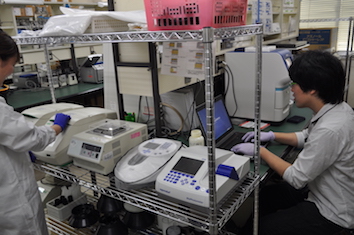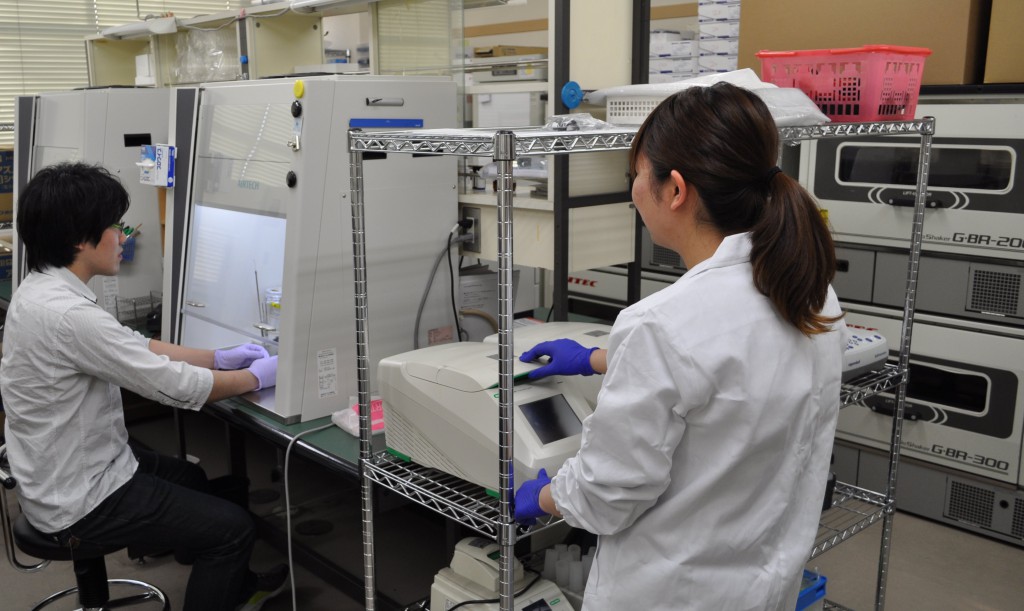Research
Applied and Environmental Microbiology

Daisuke Kasai
Associate Professor

Natural rubber degradation
Natural rubber is a biopolymer containing poly(cis-1,4-isoprene) as the main component, and is produced by over 2,000 plant species from approximately 300 genera including Hevea brasiliensis. Natural rubber from H. brasiliensis is used industrially for tires, seismic isolation rubbers, and medical gloves. The waste of these products has been treated by combustion or landfill processes, which are hazardous to the environment. It is required to find alternative treatment process for rubber waste.
Rubber-degrading bacteria were screened for the production of clearing zones around their colonies on latex overlay agar plates. Then, novel rubber degrading bacteria, Actinoplanes sp. strain OR16 and Rhizobacter gummiphilus NS21, were isolated. We have determined the genome sequences of these bacteria, and identified the genes, which are responsible for rubber degradation. The biochemical characterization of the genes and the gene products are still going on, in order to gain a better understanding the microbial rubber-degradation mechanism in nature.
Biodegradation of aromatic compounds including pesticides, herbicides, and plasticizers
Chloroanilines including 4-chloro- and 3,4-dichloroaniline have been extensively used as the industrial production such as dyes, cosmetics, pharmaceutical products, and herbicides. However, these chemicals have been considered as an environmental pollutant, due to their toxicity and recalcitrant properties in the soil and water environments. In order to dissimilate these toxic compound, bioremediation, which is a decontamination process depends on the microbial biodegradability, has been noticed as one of the remediation technologies. We have characterized Acinetobacter baylyi, which has the ability to degrade 4-chloro- and 3,4-dichloroaniline. To identify the chloroanilines degradation genes in this strain, the genome and transcriptome analysis are performed.
Phthalates used as plasticizers in worldwide, are one of the useful materials. To develop the effective treatment system of the waste including phthalate, a novel phthalate degrading bacteria was investigated. We have characterized phthalate degrader, Pseudomonas stutzeri, in order to investigate the phthalate degradation mechanism of this strain. When the whole genome sequence of this strain was characterized, a novel gene cluster (pht gene cluster) which is thought to be involved in the phthalate degradation was found. Characterization of these genes and gene products indicated that the pht genes are essential for the phthalate degradation in this strain. To understand the transcriptional induction of the pht genes, the transcriptional regulatory mechanism of these genes is still going to characterize.
